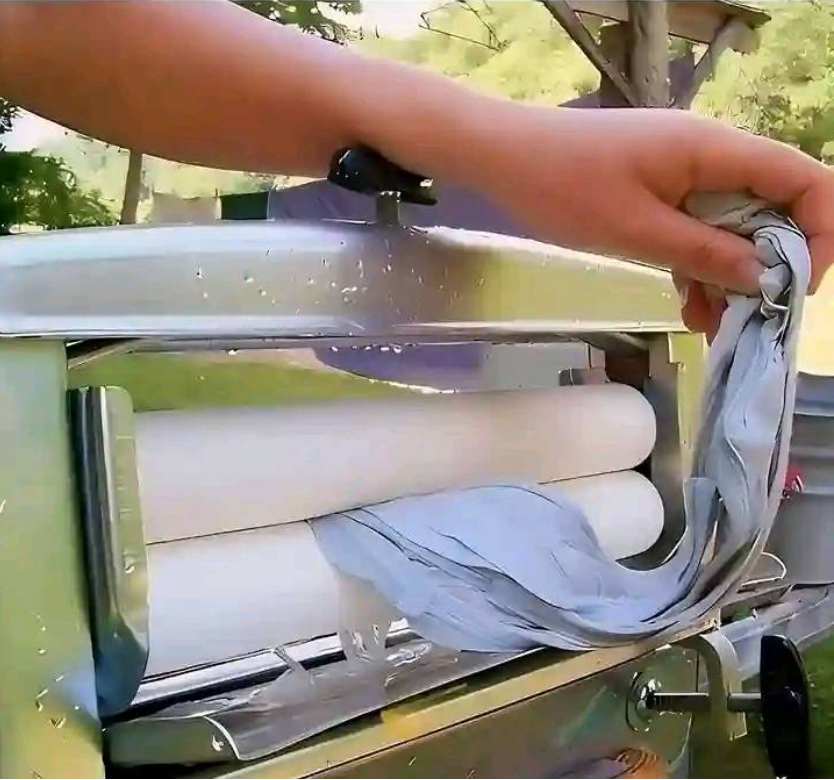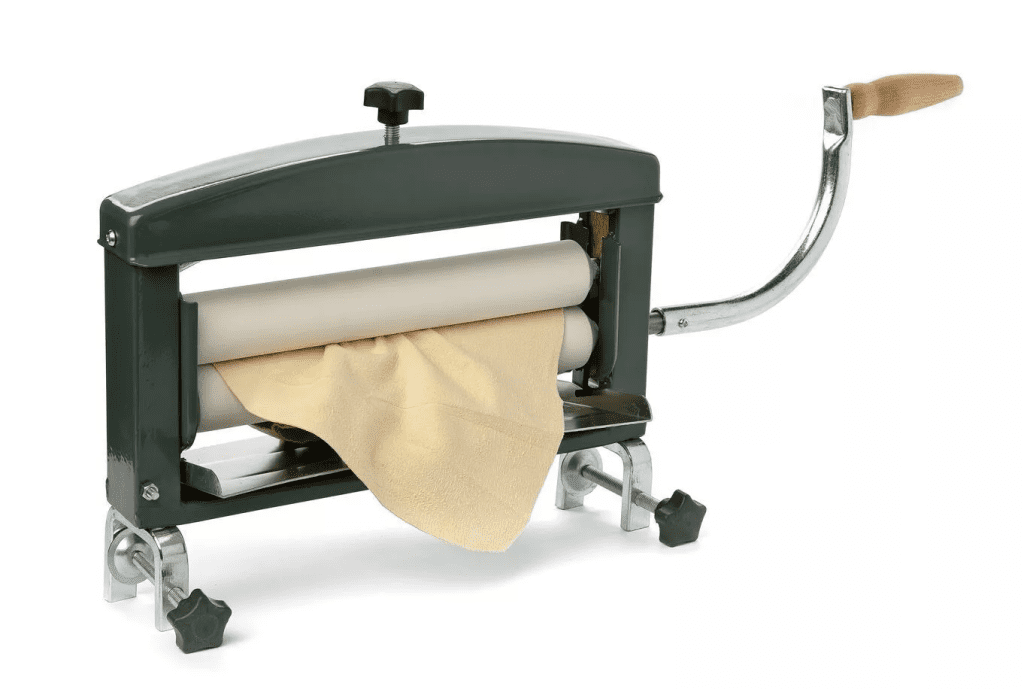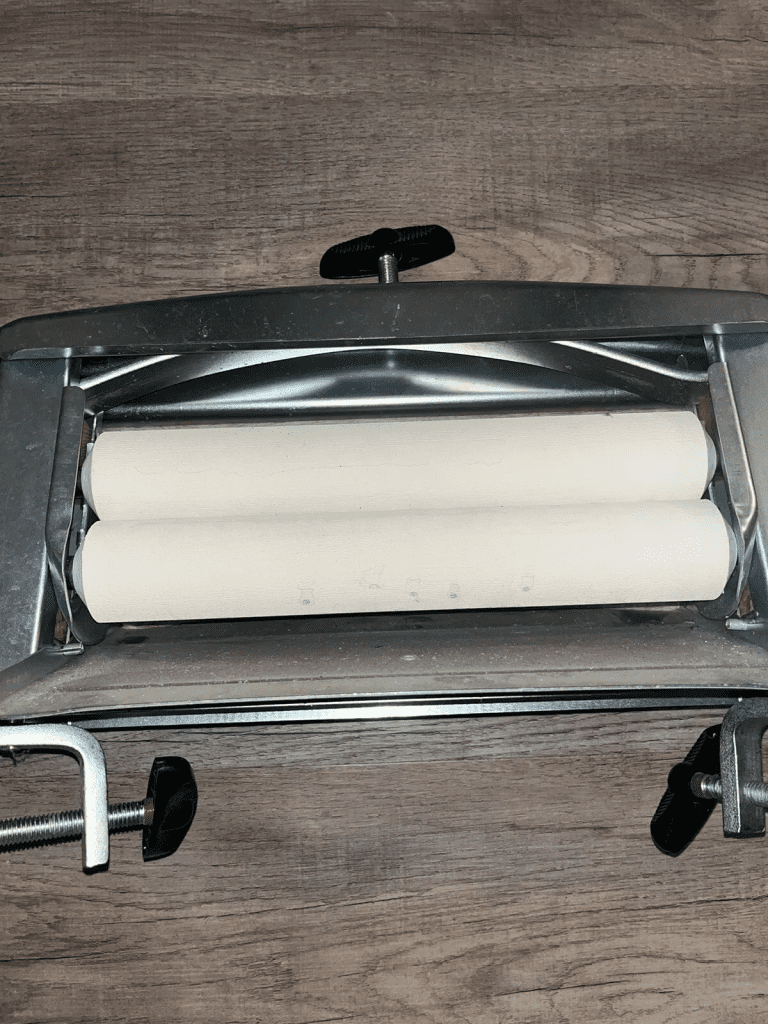The mangle, a mechanical laundry aid consisting of two rollers within a sturdy frame, has a long and intriguing history. Whether powered by hand or electricity, this device has been vital in both household and commercial settings for pressing sheets, tablecloths, towels, and even clothes. Although the electric washing machine’s spin cycle has made traditional mangles somewhat obsolete, they continue to serve important roles, even finding new life in the art world. Let’s explore the history, evolution, and unexpected uses of the mangle.
The Origins of the Mangle: Early Beginnings

The term “mangle” originates from the Dutch word mangel, derived from the medieval Latin mangon or manga, which traces back to the Greek manganon, meaning “axis” or “engine.” The earliest known mangle dates back to 1444, found near Bergen, Norway. It was a simple device, consisting of a rolling pin and a mangle board used to press damp cloths.
By 1598, the mangle was described in John Florio’s dictionary, A World of Words, as a type of press for giving textiles a lustrous finish. Over the centuries, the mangle evolved from this rudimentary design to become an essential part of laundry routines across Europe.
The Industrial Revolution and the Rise of the Mangle
During the second half of the 19th century, mangles became more sophisticated as commercial laundries began using steam-powered versions. These industrial mangles could press large quantities of laundry efficiently, making them popular in laundries and wealthy households.
In 1843, John E. Turnbull of Saint John, New Brunswick, patented the “Clothes Washer With Wringer Rolls,” marking the first major leap in mangle design. This innovation paved the way for geared wringer mangles, which were smaller, upright versions of the traditional box mangle. Around the same time, Robert Tasker of Lancashire developed the first geared wringer mangle in the UK, further improving the efficiency of laundry processing.
By the early 20th century, electric mangles had become widely available, transforming laundry tasks by pressing large, flat items quickly and evenly.
The Mangle’s Evolution: From Hand-Crank to Electric Models
Initially, home mangles were operated manually, with users turning a hand crank to rotate the rollers. The user would feed wet laundry between the rollers, using pressure to remove excess water and flatten fabrics. Early mangles were typically made of wood, with rubber-coated rollers introduced later for a better grip.
In the 1930s, electric mangles began to appear, making laundry work less labor-intensive. These devices featured a rotating padded drum that revolved against a heating element, pressing and drying laundry simultaneously. Notable brands like Solent, Thor, Ironrite, and Apex offered electric rotary ironers, which became popular in American households. By the 1950s, home mangles—also known as rotary ironers—were marketed as time-saving appliances by companies like Bendix, General Electric, Kenmore, and Maytag.
The Decline of Domestic Mangles and Their Continued Commercial Use

With the advent of spin cycles in modern washing machines, the need for mangles in homes diminished significantly. Spin dryers were more efficient at removing water from clothes, rendering traditional mangles largely obsolete for everyday laundry.
Despite this decline, mangles remain crucial in commercial laundries where they are used to press large, flat items like sheets, towels, and tablecloths. Their ability to press fabrics evenly and quickly makes them invaluable in hotels, hospitals, and industrial laundry services.
Mangles are not only energy-efficient but also effective at reducing dust accumulation. By pressing the fibers back onto the cloth, they help minimize the fibers’ tendency to shed, thus keeping the fabric cleaner for longer periods.
Innovative Uses: The Mangle in the Art World

While the mangle’s primary role has been in laundry, its design has inspired creative minds in unexpected ways. Artists like Barbara Brash have adapted mangles into makeshift printing presses. By replacing the rollers with metal cylinders and adding a metal platen between the rollers, artists can use the mangle to apply even pressure to paper and printing plates.
This innovation offers a cost-effective alternative to commercial printing presses, making it an appealing option for artists working with etching and relief printing. The repurposing of mangles for artistic use demonstrates their versatility beyond laundry, turning them into tools for creative expression.
The Benefits of Mangling: Efficiency and Longevity
Mangles offer several practical benefits, especially in commercial and large-scale laundry operations:
- Efficient Pressing: Mangles press large, flat items like sheets and tablecloths more evenly and quickly than ironing by hand.
- Energy Savings: Compared to traditional clothes dryers, mangles use less energy, making them an environmentally friendly option for drying and pressing.
- Reduced Dust Accumulation: By pressing fibers back into the fabric, mangles can help reduce dust, dirt, and grease accumulation, keeping textiles cleaner for longer.
These advantages make mangles indispensable for businesses that handle bulk laundry, such as hotels and hospitals, where cleanliness and efficiency are top priorities.
The Legacy and Future of the Mangle
Although the mangle is no longer a common sight in modern homes, its impact on the laundry industry is undeniable. The device has not only made laundry more manageable but has also played a key role in the evolution of household technology. As commercial laundries continue to rely on mangles, their design and functionality are likely to adapt further, incorporating modern technology to meet efficiency standards.
The mangle’s transformation from a basic hand-cranked device to an advanced electric press is a testament to human ingenuity in finding ways to make everyday tasks easier.
Conclusion: The Enduring Relevance of the Mangle
From its origins in the 15th century to its heyday during the Industrial Revolution, the mangle has played a vital role in laundry care. While it may have been replaced by spin dryers in most homes, its usefulness in commercial settings and creative applications continues. Whether pressing sheets in a hotel or serving as a printing press for artists, the mangle’s enduring relevance speaks to its versatile design and practical utility.
In a world that constantly evolves, the mangle remains a symbol of timeless innovation, proving that even the simplest devices can have a lasting impact.


